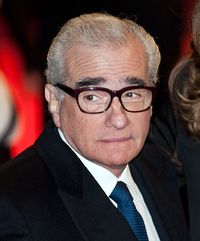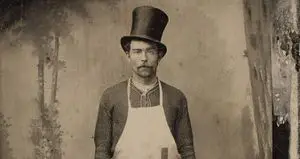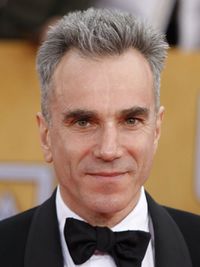How Historically Accurate is the movie Gangs of New York
The Gangs of New York is widely viewed as an outstanding movie, but it is not particularly historically accurate. This movie is a 2002 epic directed by one of the greatest modern directors, Martin Scorsese. The now-defunct Miramax produced the movie, and it was based on an idea by Jay Cocks. The movie had a heavyweight cast starring Leonardo Di Caprio, Cameron Diaz, and Daniel Day-Lewis. The motion picture was generally well-received, but critics were not in love with the movie's script. It was a commercial success, and it received ten academy award nominations but failed to win any awards.
Is the Gangs of New York a true story?
While events inspire the movie in the New York City of the 1860s, the movie is not based on a true story. The Gangs of New York, like many Scorsese movies, is an examination of organized crime in New York City. In essence, the movie is a vengeance drama. It is set in the American metropolis before and during the American Civil War. The movie's focus is on the gangs that once controlled the Five-Points area of New York, which was a notorious slum.
It follows the leader of a criminal gang tied to the political establishment in New York City. ‘Bill the Butcher,’ played by the Anglo-Irish actor Daniel Day-Lewis rules the Five-Points. The character is a ‘Nativist’ and wants America to remain a white Anglo-Saxon Protestant country. He despises the recent and numerous Catholic emigrants in New York.
What is the story of Gangs of New York?
The movie starts with Bill the Butcher killing an Irish gang named Priest Vallon, played by Liam Nesson in the 1850s. The 'Priest' s son Amsterdam Vallon returns to the Five-Points, and plots revenge against Bill the Butcher for killing his father during the American Civil War. Di Caprio’s character successfully ingratiates himself into Bill's mob, but he does not reveal his true identity.
The movie's plot is driven by both his desire to kill Bill and his growing admiration for the man. In the movie's finale, Amsterdam confronts Bill the Butcher and his gang during the historic Anti-Draft riots of 1863. Amsterdam kills the gang leader and leaves for a new life in San Francisco. The movie was roughly based on Herbert Asbury's book, The Gangs of New York. This book is controversial, and many critics believe that Asbury sensationalized the period and that his book is riddled with inaccuracies. [1]
What are the Five Points in New York City?
The Scorsese movie has a definite sense of place, and the director sought to bring the Five Points neighborhood of the 1860s to life. There was a lavish amount of money spent to make sure that the motion picture was as realistic as possible and that viewers had a sense of what it was like to live in a 19th-century urban slum.
The Five Points neighborhood was a real-life area. It was the most notorious slum in New York, and it was crime-ridden and a center of prostitution in the city. [2] Gambling and bare-knuckle boxing were common in Five Points. In the motion picture, several gangs controlled the area for the political bosses who ran the city at this time. The gangs ensured that people would vote for these bosses. The movie portrays these bosses as ruthless and corrupt.
This aspect of the film was largely accurate, and the Five Points was a center of criminality and corruption in the city until it was torn down in the early 20th century. It also captures the terrible conditions in which people lived and the filth and squalor they had to endure. The movie also captures the varied population of the area, particularly the many Irish immigrants who had fled the Great Irish Famine (1845-1850).
However, there are many inaccuracies in the movie concerning the presentation of Five Points. [3] Crime was probably worse here than in other parts of the city, but it was by no means as lawless as portrayed in the movie. In Scorsese’s film, the only characters portrayed are thieves, criminals, boxers, gamblers, and other undesirables. In reality, most of the neighborhood was populated by people who had regular jobs and worked hard every day. They were laborers and porters, who had tough jobs and could barely afford their rent. They constantly suffered from food insecurity and struggled to care for their families.
The movie shows Five Points as a place of unrelieved squalor and poverty, but in fact, the area by the 1860s had significantly improved. Evangelical Christian missionaries concerned with the Five Points' sinfulness had managed to persuade the New York city authorities to improve conditions in the slum. Scorsese’s portrayal of the area is not accurate as the neighborhood was a far better place than it had been in the 1830s and 1840s. [4]
Another inaccuracy of the movie is that there are many Chinese immigrants shown in the movie. This is an anachronism because there was no real Chinese presence in New York until the 1870s and 1880s. During the Civil War, there were only a few hundred Chinese origin people in the entire city. [5] Chinese migrants in the United States primarily went to California, not New York.
Another glaring inaccuracy in the 2002 movie was the presence of catacombs under the Five Points district. Bill the Butcher and the other gangs are shown as practically literally living underground. However, there were no catacombs in the neighborhood. Scorsese added these caves for dramatic effect. While the catacombs did not exist, they were a compelling setting for the movie.
How much violence was there in New York City?
Gangs of New York is a compromisingly violent movie, and it is typical of Scorsese’s oeuvre. Many commentators likened it to modern gangster movies. The motion picture focuses on the recurring fights and battles between the native gangs led by Bill the Butcher and the Irish gangs. At the start of the film, Bill the Butcher and his mob engage in a pitched street battle with the Priest Vallon's Irish gang.
The gangs are shown to be armed with weapons such as swords and axes. In other violent incidents throughout the movie, there are many casualties and many fatalities. While gang fights were very common in the 19th century, New York and bar brawls were probably much more common than now. Scorsese exaggerates the level of violence, and there were very few gang battles portrayed in the movie. There were only a few instances when guns and swords were used.
Even though Five Points was poor, it was not that violent, and murder was rare. At this time, there was hardly a murder a month in all of New York. New York is currently one of the safest cities in the United States, and it was probably even safer in the 1860s. The Rise of the Mafia and Prohibition led to a dramatic increase in violence that the city became famous for.[6]
Scorsese did not understand the nature of the gangs in 19th century New York and assumed that they were similar to modern street gangs such as the Crips and the Bloods and organized criminal organizations such as the Mafia. Before and during the civil war, the gangs in New York City were primarily political clubs and often met to talk local politics. Their primary focus was politics. They wanted to get their allies elected. There was violence but mostly around election time, and this was intended to intimidate their political opponents for the benefit of political bosses such as the infamous Boss Tweed.[7]
The movie concentrates on the battle between the native gang under Bill the Butcher and his mob, who are all rapidly anti-Irish. While there was violence between the newcomers and natives and in the 1857 riots, the Irish were more often than not battling each other to control criminal enterprises and for political influence than Nativists. [8] While there is some truth in Scorsese’s account of New York’s underworld, he took a great deal of dramatic license.
Which Characters in Gangs of New York are Fictional?
In the 1860s, there were many well-known and influential gang leaders in New York. Indeed, history offers many infamous and colorful characters that could have been used by the Gangs of New York makers. However, by and large, the characters are all fictional. Bill the Butcher was not a real figure, but he was probably based on William Poole, an infamous gang leader from the 1840s. Like Bill, he was virulently anti-Catholic and disliked immigrants, but he was murdered before the Civil War.
The Irish gang leaders were all entirely fictionalized, and none of them had any basis in fact. Some have argued that Amsterdam Vallon was based on an Irish-born gambler and gangster. The love interest of Di Caprio’s character, who is played by Cameron Diaz, was another purely fictional character. Also, the names of the gangs are not correct. For example, the Irish gang is known as the ‘Dead Rabbits’ in the motion picture, but they never existed. A newspaperman invented them in the 1850s. [9]
What were the New York City Draft Riots 1863?

The climax of the movie is a vicious fight between Amsterdam and Bill the Butcher. This takes place during a riot by mainly Irish residents against the draft. The riot was a historical event, and it was one of the worst outbreaks of public disorder in the history of New York City. The New York City Draft Riots of 1863 were a violent expression of growing discontent among the poor and the working class. The economy of New York had suffered greatly during the war, and unemployment was high, and wages were low.
In 1863, Congress introduced the draft, and many poor men were drafted into the Union army. Alternatively, wealthy Northerners were able to evade the draft easily. On a hot July day, a mob of mainly Irish men went on a rampage protest against the draft. At first, the crowd targeted public buildings’, but they so turned their anger toward the local African-American community.[10]
What started as a protest against the draft became a race riot, and the Irish protestors slaughtered innocent African Americans. Several regiments of the Union army were sent to President Lincoln to restore law and order. Gangs of New York does not accurately portray the Draft Riots in 1863. While the film demonstrates the widespread anger against the draft and how its unfairness triggered the riots, it virtually ignored the reality that it morphed into a brutal race riot. Instead, the Draft Riot is only used as the dramatic backdrop for Bill and Amsterdam's final confrontation.
Additionally, the use of a cannon to quell the riots was both theatrical and completely inaccurate. Although soldiers fired on the mob to break it up, cannons were not fired on the crowds.[11]
How accurate is Gangs of New York?
Related DailyHistory.org Articles
- How accurate is the movie The Aviator?
- How Historically Accurate is the Outlaw King?
- How historically accurate is the Medici Masters of Florence Series?
- Is the movie Dunkirk historically accurate?
- How historically accurate is the movie 'The Battle of the Bulge'?
- How historically accurate is the movie 'Tora, Tora, Tora'?
- How historically accurate is the movie 'A Bridge Too Far'?
However, there are many exaggerations and inaccuracies. These include overstating the violence that took place at the time in the Five Points. The nature of the gangs and their motivations is not portrayed particularly accurately. Additionally, all of the characters and gangs in the movie are fictional. The most serious inaccuracy is the distortion of the Draft Riots of 1863. Hopefully, someone makes a movie that does accurately portrays these riots. On this basis, it could be said that the movie does manage to capture something of the Five Points and its gangs but is not a realistic portrayal of New York in the 1860s.
Further Reading
Bruce W. Dearstyne, The Spirit of New York: Defining Events in the Empire State's History (Albany: Excelsior Editions, 2015)
Herbert Asbury, The Gangs of New York (New York, Garden City, 1928)
Barnett Schecter, The Devil's Own Work: The Civil War Draft Riots and the Fight to Reconstruct America (New York, Bloomsbury Publishing, 2005)
References
- ↑ Herbert Asbury's, The Gangs of New York (New York, Garden City, 1928)
- ↑ Czitrom, Daniel. "Gangs of New York." Labor History 44, no. 3 (2003): 301-304
- ↑ Czitrom, p 300
- ↑ Conway, K., McCormack, M. and Thomas, C., 2003. Gangs of New York. Social Education, 67(6), pp.313-317
- ↑ Conway et al., p 316
- ↑ Schneider, Eric C. Vampires, dragons, and Egyptian kings: Youth gangs in post-war (New York. Princeton University Press, 2001 ), p. 67
- ↑ Mandelbaum, Seymour J. Boss Tweed's New York (J. Wiley, 1965), p 124
- ↑ Mandelbaum, p 135
- ↑ Walkowitz, Daniel J. "‘The Gangs of New York’: The mean streets in history." In History Workshop Journal, vol. 56, no. 1, pp. 204-209. Oxford University Press, 2003
- ↑ Schecter, Barnet The Devil's Own Work: The Civil War Draft Riots and the Fight to Reconstruct America (New York, Bloomsbury Publishing, 2005), p 96
- ↑ Schecter, p 101




